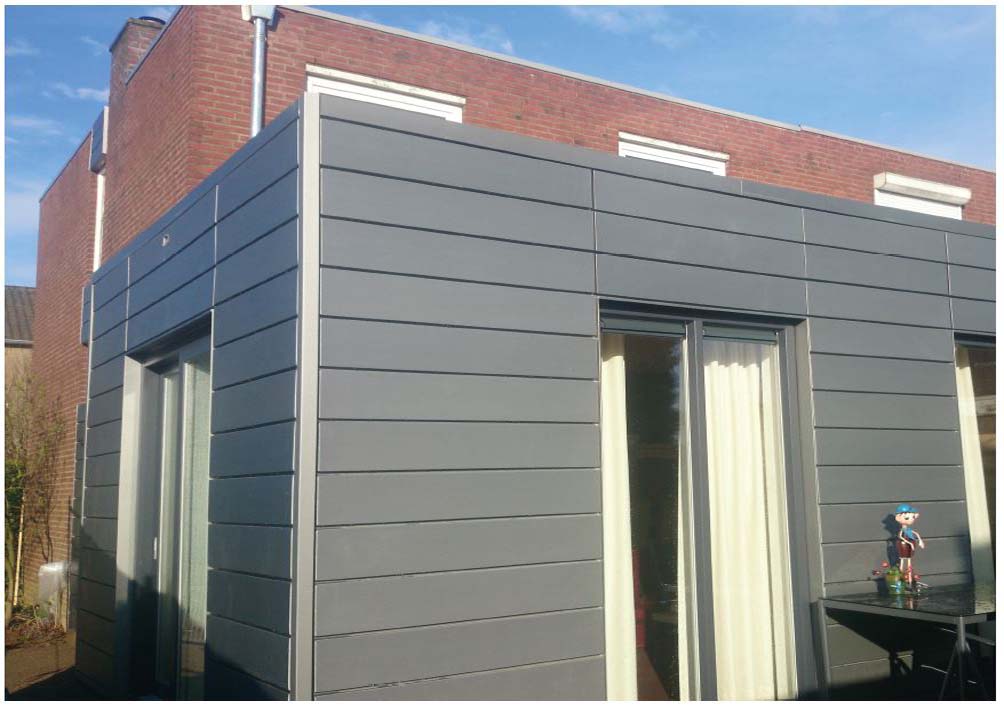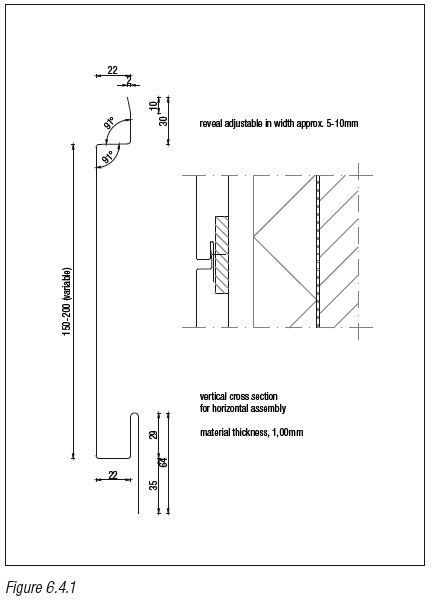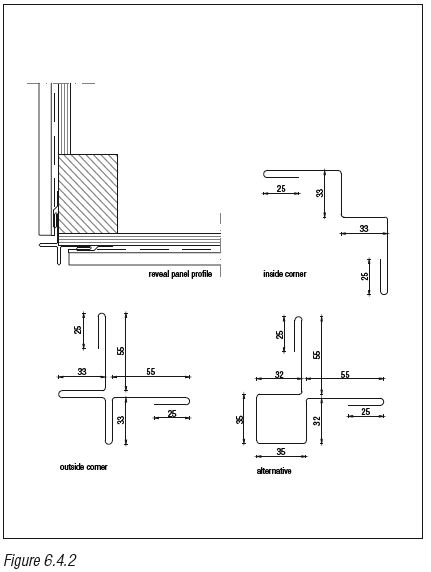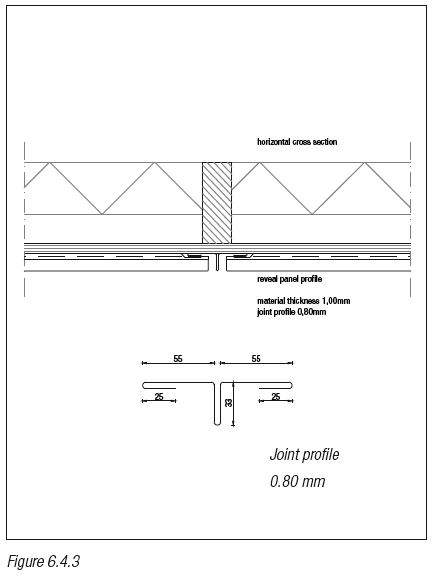Reveal Panel system
The Reveal Panel system is suitable for façade cladding and can be installed both vertically and horizontally on zinc roofs. The system consists of profiled zinc sheets with a variable width size max. 200 mm. The Reveal Panel profiles are assembled such that a joint (reveal) is created. The system is connected with a tongue and groove. The dimensions of the panels and joints are variable, as are the lengths of the reveal panels.


In this chapter the reveal panel as shown in figure 6.4.1 is used as an example.
Generally, the system is applied with a material thickness of 1.0 mm. A standard solution is available for most connections, such as inside and outside corners. Different profiles are available, such as corner, joint and water check profiles (Figures 6.4.1., 6.4.2 and 6.4.3).
Support
The façade with Reveal Panel profiles must be supported by a wooden substructure, preferably unplaned timber boarding, 23 – 25 mm thick, not tongue-and-grooved. The gap between the timber boards must be at least 5 to 10 mm. The boards may be spaced up to 100 mm, to be determined by the builder.


Assembly
The profiled panels are secured to the underlying timber boards, preferably using galvanised steel screws. Depending on the chosen panel profile type, a reveal is created between the different parts, which can be set between 5 and 10 mm width. The profile lengths are a maximum of 5 meters. For lengths longer than 4 meters, slotted holes are recommended to take up length changes of the zinc.